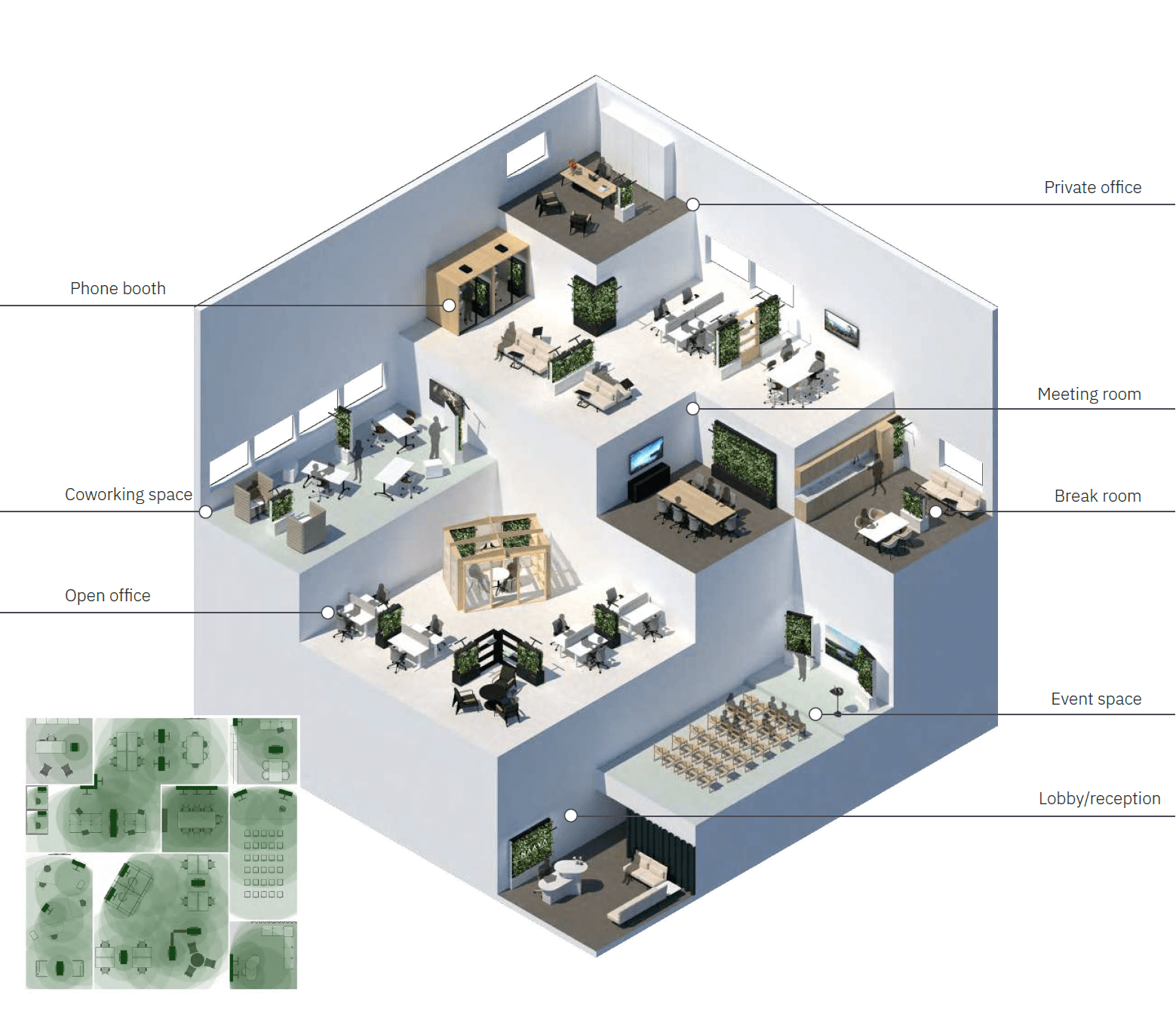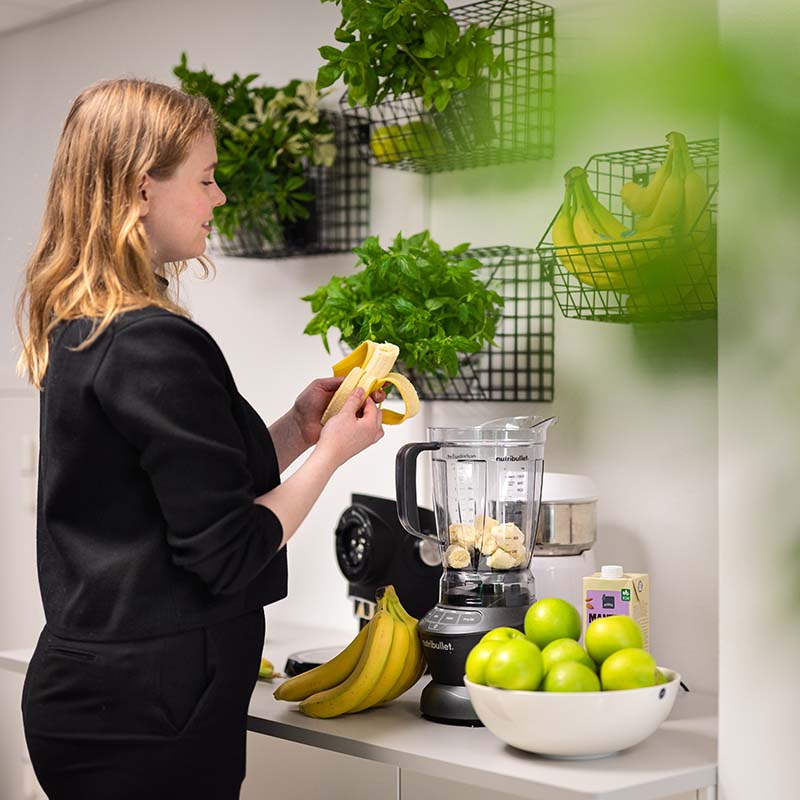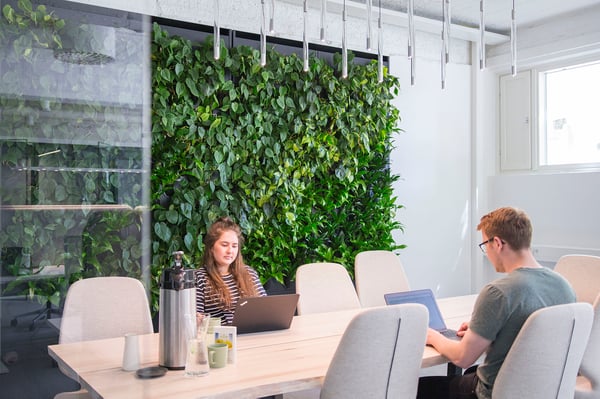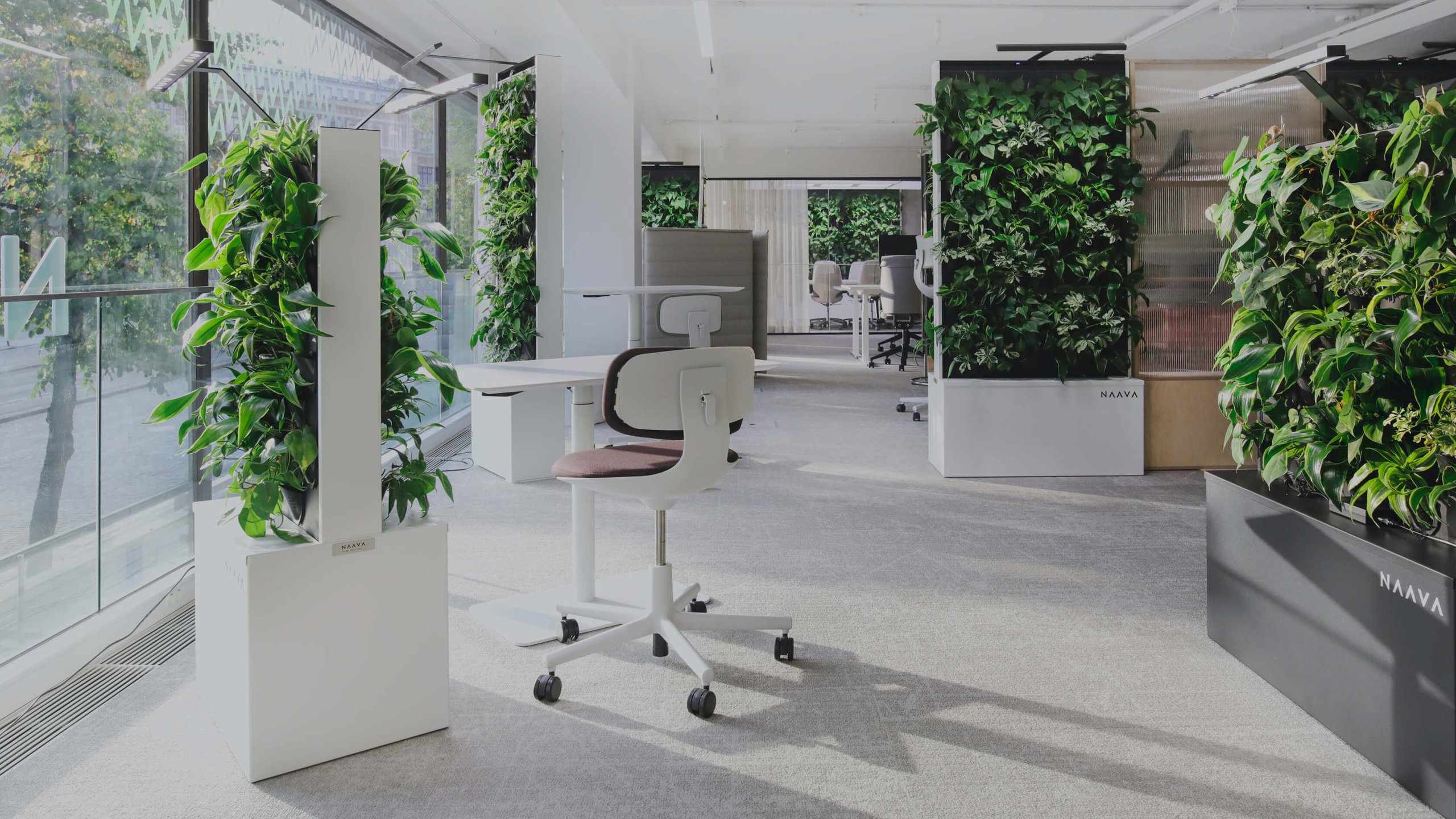
In the Footsteps of Alvar Aalto: Naava and Biophilic Design
What comes to mind when you think about Finnish architecture?

The power of nature is well-recognized: we intuitively know that going for a walk in a park or a hike in the forest, sitting by the beach, or decorating our homes with plants makes us feel happier. Why does nature have such a profound effect on us?
Although we have greatly altered our environment to fit our modern needs, we're still carrying the inherited preferences of our ancestors. This is why we have fears making us avoid danger, such as high places, spiders, and darkness - called biophobia - and why we have affiliations towards what makes life possible, called biophilia.
It is no coincidence that many of the natural features which are found to be aesthetically pleasing, were also crucial for the survival of our species. Our brains have evolved to prefer living amongst a high diversity of plant and animal life for food and resources, high vegetation for refuge and protection, and natural water sources for drinking and bathing. Our brains are constantly aware of our surroundings, looking both for the signs of danger, as well as signs of life. Buildings offer protection from many of the dangers, such as weather, temperature, and predators, but it also creates a whole new kind of danger: the lack of what our stone-age brains consider life sustaining elements.
When we see a safe, prosperous environment, our brains send our nervous system signals to reduce the amount of stress-hormones in our bodies, making it easier for us to relax, heal, concentrate, and recover.

Biophilic design is the most researched concept to improve well-being of people using the premises holistically
Concentration
Memory
Productivity
Cognitive performance
Happiness
Immune system
Creativity
Motivation
Stress
Anxiety
Misbehaviour
Absences
Discomfort
Blood pressure
Fatigue
Isolation
Biophilic design is not a trend or a style orientation when it comes to interior design, but rather a guideline that can be implemented in any indoor space to make it more human-centered. With the biophilic design concept, you can ensure that the built environment fulfills our biological needs. There are several ways to implement the biophilic elements into the design.

Similar to being outdoors in nature, bringing real nature directly from outdoors has the most impact on us when it comes to biophilic design.

We can also trick our brains by mimicking natural elements with shapes, patterns, colors, and technology aided solutions.

Biophilic design is more than just the object we are surrounded by, but the whole feel and view of the space we are in.


Water and food are the most crucial elements for our survival: without water, we can't survive for more than a couple of days, and without food, only a few weeks. When it comes to a life-sustaining environment, our brains want to know that these elements are readily available.

We have evolved around other life that has been here much longer than we have. Plants are a prerequisite for nearly all other life on Earth, and a significant sign of a viable environment for us. The more diverse plant life we are surrounded by, the more resources - such as fresh water, food, other forms of life, medicine, and tools - we are likely to have on hand. It has become so important for us to like plants, that just seeing the color green has a positive effect on our brains.

Unlike water and food, without air, we can't survive for a couple of minutes longer. We breathe more than 10,000 liters of air every day, and our skin and mucous membranes are constantly in touch with what it contains: particles, chemicals, humidity, pathogens, and healthy microbes. Having fresh, natural air to breathe and spend our time in is crucial for how we feel and how healthy we are.
.jpg)
We have adapted to the natural cycle of day and night on Earth. As a day-active species, bright, white sunlight indicates us to be active, and darkness to be in rest. Dim, warm-toned light on the other hand helps us transition between those activity levels. Our circadian rhythm controls our hormone levels, affecting our immune system, body temperature, mood, physical mobility, and brain function.
.jpg)
We gather information with all our senses, and right after our vision, our hearing is the next most important channel for us to learn about our environment. We can hear rain or streaming water, other animals, or wind rustling the leaves of trees. Loud noises can alert us of danger, but so can complete silence: it can be a sign of inhospitable environment lacking any other animals, or a predator that has driven them into hiding.
.jpg)
Our brains have learned to recognize natural shapes and colors. Seeing unfamiliar objects with odd colors or forms is a sign of possible danger, and while they can intrigue our curiosity, being around such unrecognizable objects can be distracting for our brains.
.jpg)
Humans are a social animal, so much so that there has developed a myriad of internal mechanisms around our social behaviour. Being left outside the group has been almost a guaranteed death for our ancestors due to the advantages of group work brings to individuals. Being able to form trust and strong bonds between individuals by working together fosters our internal needs to be a part of a group.
.jpg)
Our brains and bodies have been made to move throughout the day. We have not been used to stay stationary for long periods of time, but rather alternate between standing, walking, and resting. Even our resting position is different to our modern habits, as our bodies developed without the influence of furniture such as desks and chairs, and tools such as computers and phones.
.jpg)
The overall diversity of our environment can provide different opportunities for our survival: places to hide or rest, and good visibility to keep awareness of what is happening around you. We have different needs for different tasks we do throughout the day, so a well functioning space should offer different types of spaces withing it.

Naava's solutions have been designed to made biophilic design easy to implement into any space by combining all the biophilic elements into one product: Naava has real plants that purify and humidify air while giving an audio cue of water and bringing natural light indoors; the Scandinavian design and coloration being inspired by nature; the furniture-like design allowing the product to be used as a space-divider and mobility to transform the space at any time to suit different activities; and adding to team work with a magnetic whiteboard.

Our biophilic design experts Eeva Niemelä and Enni Karell know everything you need to know about biophilic design, whether it's for your design project for a client, or your own space you are working with. Eeva Niemelä is the leading expert in the world when it comes to green walls and interior spaces, with over 200 customer spaces she has been involved with. Together with Enni Karell, interior architect specialized in biophilic design, Naava's team helps you find the correct solutions to fit your needs.

Editorial
What comes to mind when you think about Finnish architecture?

Editorial
What is Biophilic Design and how can it improve our health and well-being?

Editorial
An interview with Kenny Hytönen - executive consultant of consulting and interior design agency Workspace We ...
